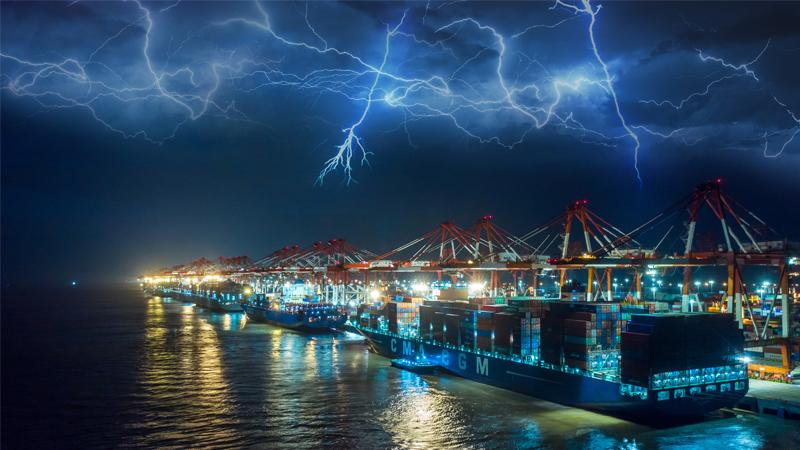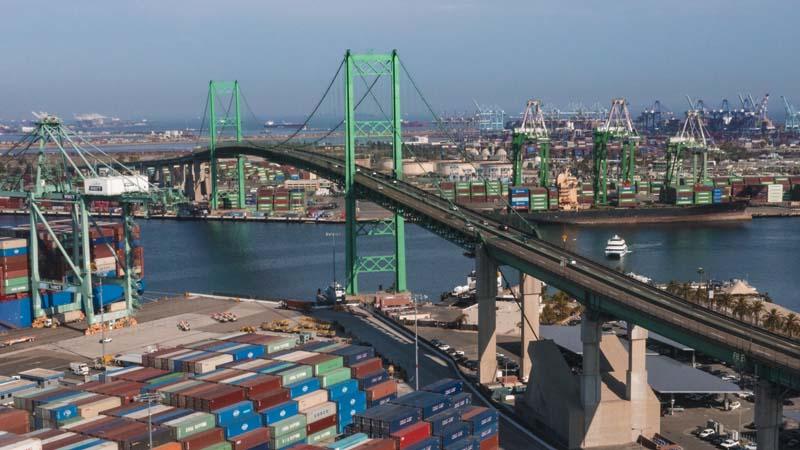Ports and climate change, Part 2: Ports facing changing climatic risk with Michael Yarwood, TT Club
Climate change is already exposing ports to more extreme weather occurrences and these can cause millions in damage in repair and downtime, in addition to risking worker safety.
This blog series focuses on the topic of ports and climate change. Vaisala interviews maritime and port professionals who present interesting views on how ports could adapt their operations to avoid weather-related problems before they happen, how ports could be better prepared for climate change related risks and how to mitigate the effects of unavoidable events by using smart technology.
Part 2: Ports facing changing climatic risk
Interviewee: Michael Yarwood, Managing Director Loss Prevention, TT CLUB
Interview questions:
- Please tell us a bit about yourself, and your interest and connection to sustainability and climate-change topics?
I joined TT Club in 2010 in a claims focused role, following a 13-year career in logistics and freight forwarding. I am currently Managing Director Loss Prevention at TT Club, a global role that encompasses and considers a wide range of risk to all disciplines within the global supply chain. TT Club’s primary objective is to help make the industry we insure safer and more secure.
Risks connected to sustainability and climate change are becoming ever more prevalent for all categories of our membership, from those who own and operate containers, port and terminal operators, through to freight forwarders and logistics operators who might retain contractual liability for the cargo itself. The recent floods experienced in Durban, South Africa are a prime example of how all supply chain actors have a potential exposure where climate risks are concerned.
- Why is it important to conduct regular assessments of risks related to climate experience across the full breadth of port operations?
TT Club continually analyses claims to identify the primary risks as well as current and emerging trends. TT have seen claims associated with climatic conditions not only increasing in frequency, but importantly, occurring in locations that we have not witnesses previously. Historical weather patterns and the ability to forecast with an acceptable degree of certainty where the next incident might occur are arguably less reliable than they once were. In recognition of changing climate patterns, regular, localized risk assessments considering climate change risks are a prudent step for any operator.
There is genuine concern that the weather pattern changes experienced in recent years will continue and potentially increase in severity. Port operations are particularly susceptible to severe winds, storm surges and flooding. We must therefore continue to assess the risks posed by climate change.
- Based on your ports’ claim data, 18% of claim costs are the result of adverse weather, such as heavy rainfall and strong winds/microbursts.
In many instances, it could be argued that assessing the weather risks is not necessarily the challenge, while not all, most ports are aware of and will understand the presented risks. One could instead consider that the challenge is in fact how ports can better address these weather related risks.
For example, all quay cranes should have both storm pins and storm tie-downs specified through the procurement phase, regardless of location and historic weather patterns. Procedures should be in place to secure such equipment in the event of a windstorm, ensuring that operations are ceased in adequate time ahead of the arrival of the storm. In the container yard, robust plans to lower stack heights of empty containers would be prudent.
There are numerous mitigating steps that could be included in emergency plans such as ensuring cargo and loaded containers are elevated from the ground level if a flooding risk exists. It has to be recognized however that each operation is unique, whether it be the equipment on site, topography or the available working space, emphasizing the importance of localized risk assessment. While emergency plans should be developed based on the outcomes of risk assessment, they should be robust and achievable – recognizing that one might not enjoy the benefit of an early warning as a weather event unfolds.
- Has TT Club noticed a change in approach from ports in recent years as instances of climate-related claims have continued to rise?
Awareness of the associated risks have been continually raised across a variety of forums, many operators will undoubtedly be considering these risks and adopting mitigating strategies. For the less fortunate, they will have learned from first-hand experience of facing unprecedented climatic conditions and will have experience and data to evidence how sufficient their existing plans were.
For some this might involve capital expenditure, investing in new equipment, for others it might simply be changes to existing procedures, frequent training for personnel, and building protection through contracts with customers or reviewing insurance provisions. I think it would be fair to say that very few operators view climate change as a risk that will not affect them in some way and so the vast majority is assessing and changing their approach to this area of risk. The speed and extent of the changes made will undoubtedly be influenced by myriad of factors, not least perceived exposures and appetite to invest.
- How do you see more advanced weather technologies assisting the management of climate change related risks for ports?
Having more localized, accurate and advanced warnings of weather events such as high winds and heavy rainfall would empower operators to better risk assess and understand exposures, affording opportunities to mitigate risks. Over time building, a localized historical weather pattern could assist in modelling and more accurately forecasting.
IoT solutions could be employed across common software platforms that allow weather technologies to communicate with other local ports, providing advanced warning and monitoring the direction and severity of the storm.
If a storm was travelling for example up the east coast of the UK, could weather technologies employed in the south, where the storm first makes landfall, monitor and record numerous data points and instantly communicate to other ports within in say a 200 mile radius? One port for instance would become aware of the severity of the storm but note that it was travelling away from them so no action required. A port located in the opposite direction would become aware that the storm had made landfall, that it was headed in their direction, that the storm was intensifying and that they could expect it to arrive 3 hours later. This would afford greater opportunity to take mitigating steps and follow emergency procedures.
- For ports that are considering investment in climate-resilient activities or related technologies, where would you recommend them to start?
From a commercial perspective, investment in climate-resilient activities or related technologies should be proportional to the risks faced. A reasonable starting point therefore should be to re-assess risk and potential exposures.
It is important to ensure that adequate risk assessments are undertaken across the full breadth of the operation in order to understand thoroughly the various risks and, where appropriate, develop mitigating actions and controls, together with effective continuity plans to protect the business.
While insurance might provide a degree of protection, one should not simply replace safety with insurance. There is typically a significant difference between an "insured loss" and the full "economic loss," the latter including various indirect costs, such as lost management time and reputational damage.
While not exhaustive risk assessment in this context should consider items such as location, operational activities, property, what cargo is being stored, historic and current weather data, what equipment is on site at any given time as well as considering contractual commitments to customers. The latter point really focusing in on resilience and business continuity in the event of a loss.
TT Club is the established market-leading independent provider of mutual insurance and related risk management services to the international transport and logistics industry. TT Club’s primary objective is to help make the industry safer and more secure. Founded in 1968, the Club has more than 1100 Members, spanning container owners and operators, ports and terminals, and logistics companies, working across maritime, road, rail, and air.
Read more - Ports and Climate Change, Part 1: The state of play in European ports with Valter Sélen, ESPO.
Read more - Ports and climate change, Part 3: How World Ports Sustainability Program is driving the sustainability efforts of ports worldwide with Antonis Michail, IAPH


